Numerical Particle Methods Workgroup
In the following, there are listed some possible master and bachelor projects. If you have your own ideas about a project, please feel free to contact me.All projects require an intermediate knowledge of computer programming and data analysis. In general, most of our codes and scripts are written in C and python. However, exceptions prove the rule.
Master and bachelor projects
I. Angular momentum conservation in SPH elastic dynamics
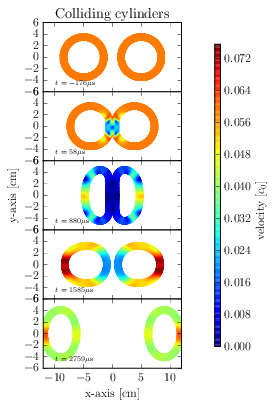
|
The standard Smooth Particle Hydrodynamics is not linear consistent and is therefore not suitable to model
rotating, elastic objects. Several correction methods to the original scheme exist and provide linear consistency. However, these
corrections lead to the violation of the conservation of angular momentum in the simulations. We want to investigate new
ideas to conserve angular momentum in SPH elastic dynamics.
This project requires no background in astronomy or astrophysics but knowledge of numerical methods and good coding skills. |
II. Implementation of a shear failure damage model and acoustic fluidization in an existing SPH code
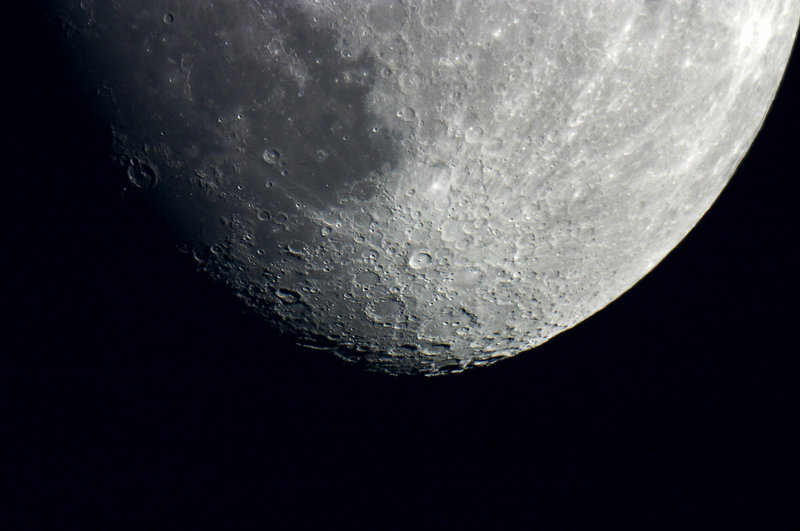
Tycho is the deep crater near center with the point in the middle. The rays emanate from it. The photo was taken in 7/27/2004 by Joe Huber using a Nexstar 11 GPS Canon Digital Rebel. |
Our existing Smooth Particle Hydrodynamics code can be applied to impact simulations. So far, our code implements a
damage model for brittle materials: We can model the crack formation in colliding rocks due to tensile failure. However,
tensile fractures play a minor role in impacts of larger objects on surfaces and shear failure due to plastic flow is
more important. In the course of this project, we want to add an existing shear failure model (see this paper) to our SPH code.
This project requires no background in astronomy or astrophysics but very good coding skills. |
III. Circumbinary disc evolution

© Daniel Thun, 2018 |
Accretion discs around binary stars play an important role in star and planet
formation. A very nice numerical study which was conducted in the department of Computational Physics (available online) shows the interesting evolution of circumbinary discs under the
gravitational influence of the binary using two-dimensional hydrodynamical simulations.
Using a different numerical scheme (namely Smoothed Particle Hydrodynamics), we want to conduct a similar study and
extend it to three dimensions with a possible inclined disc.
This project requires some background in astronomy or astrophysics and some coding skills. |
IV. Simulations for the Asteroid impact and deflection assessment (AIDA) and Hera Mission
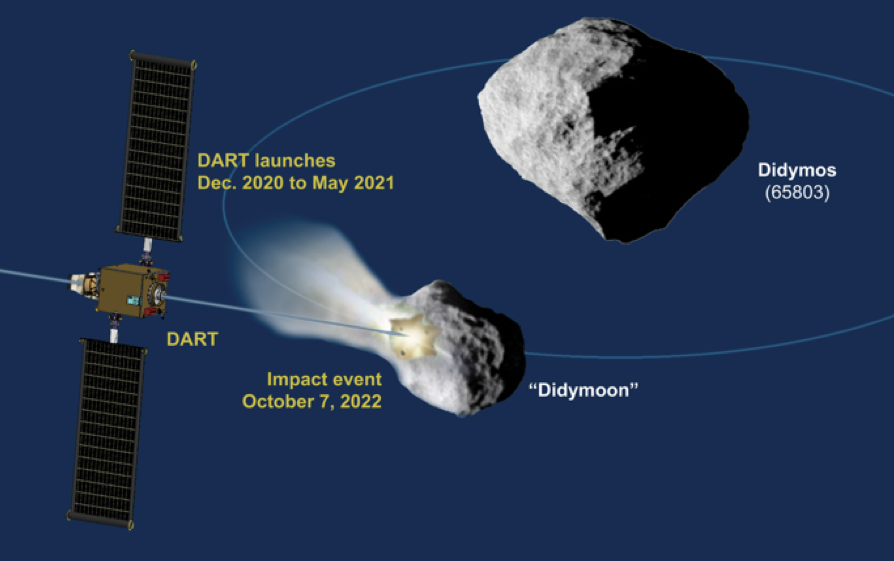
Schematic of the DART mission shows the impact on the moonlet of asteroid (65803) Didymos. Post-impact observations from Earth-based optical telescopes and planetary radar would, in turn, measure the change in the moonlet’s orbit about the parent body. © NASA |
ESA and NASA have set up some missions to investigate possible planetary defence strategies in case of larger asteroid impact
threats. We want to conduct several impact simulations in the context of the AIDA mission
(see
the ESA
Webpage).
This project requires some background in astronomy or astrophysics and some coding skills. |
V. Spherically symmetric initial conditions for modeling astronomical objects with SPH (with Christoph
Burger)
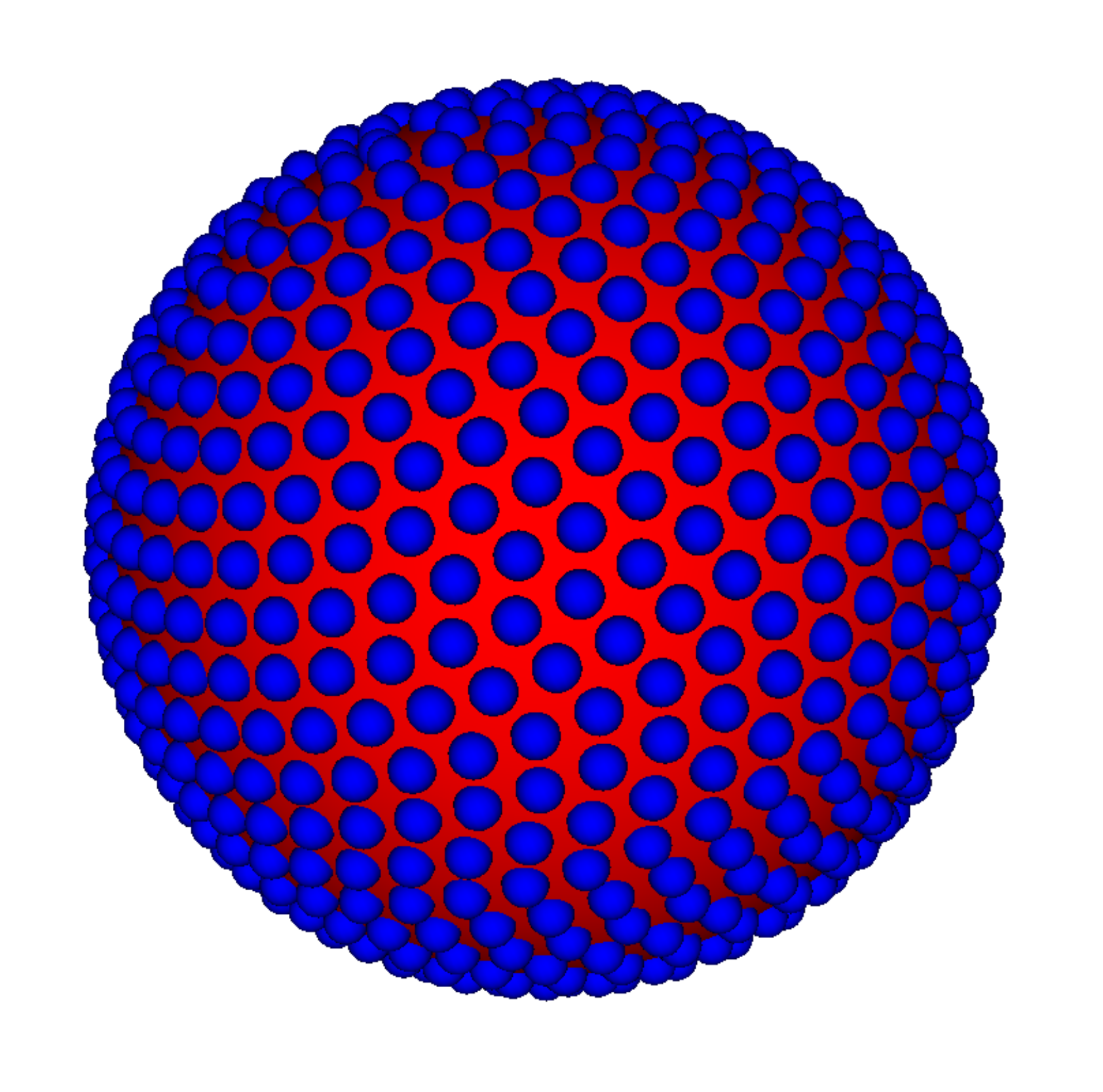
© Cody Raskin, 2016, from arxiv.org/abs/1601.03761. |
Astronomical bodies beyond some lower mass/size limit usually assume a roughly spherical shape (in hydrostatic equilibrium) due to self-gravity. Examples range from the largest asteroids and moons to planets and stars. The initial setup of SPH particles for (collision) simulations involving those objects is an important first step towards realistic results. However, non-spherically symmetric initial particle arrangements (e.g. on a lattice) are still widely used because they are straight-forward to realize, but suffer from numerical artifacts due to preferred directions along the (anisotropic) lattice. These problems can be largely solved by implementing a particle arrangement in spherical shells, where several geometric solutions have already been proposed.
This project requires no background in astronomy or astrophysics, but some coding skills and understanding of the underlying mathematics and geometry. |
VI. The influence of the material model and equation of state on modeling of water in collisions (with Christoph Burger)
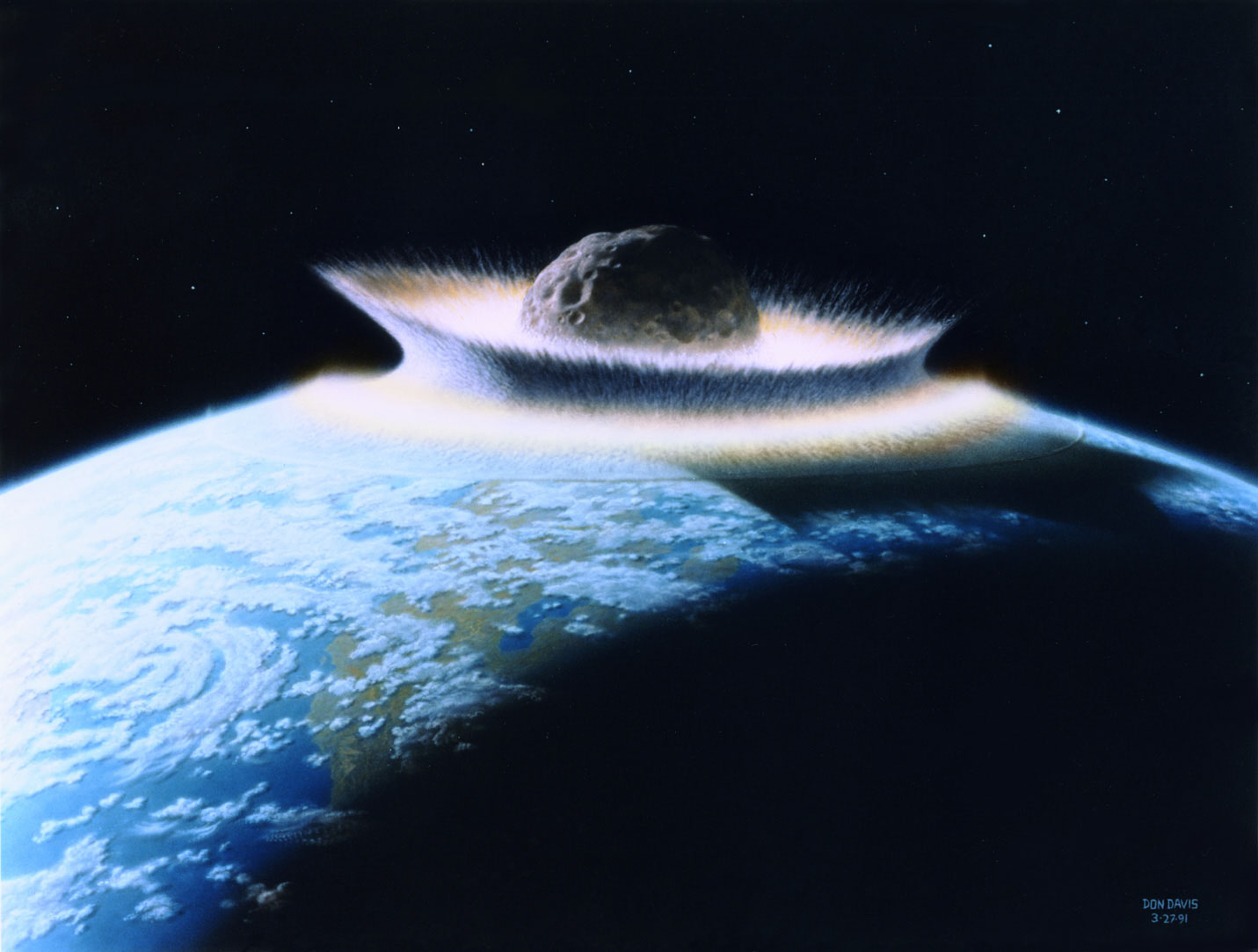
Big Impact picture by Don Davis, see Donald Davis' homepage. |
Terrestrial planets grow by collisions of bodies on all scales, which are often highly-energetic events. A major question about terrestrial planet formation is how much water they can retain after a potentially long sequence of collisions and impacts. This is of fundamental importance to their geophysical evolution and considerations about habitability.
Accurate numerical modeling of water in collisions requires mainly two ingredients, an appropriate material model and a suitable equation of state.
The aim of this project is to study the numerical modeling of water and its influence on simulation outcomes for collisions among protoplanets (bodies with sizes on the order of 10s to 1000s of km). The relevant material models and equations of state are partly implemented in our SPH code already.
This project requires good knowledge in thermodynamics (equation of state, phase changes, ...) and hydrodynamics, and some coding skills. |
VII. Implementation and testing of tabulated equations of state in our existing SPH hydrocode (with Christoph
Burger)

Gas giant interiors, NASA solarsystem.nasa.gov/galleries/gas-giant-interiors. |
In hydrodynamical codes an equation of state (eos) closes the system of differential equations to be solved, and basically describes the thermodynamical behavior of the simulated material/fluid. A very simple example is the ideal gas law.
When it comes to more complex states of matter like geologic materials (rocks, dust, ...) or once phase transitions are involved (modeling ice/water in impacts, conditions inside gas giants, ...) more elaborated eos are required. These are often available only in tabulated form, where each 'evaluation' of the eos equals a look-up (and interpolation) in such a table.
Our SPH code already has the ability to read a specific form of those tables, but we aim to generalize this ability to different formats, used particularly to describe material under the extreme conditions in planetary interiors.
This project requires some background in physics (thermodynamics ...) and good coding skills. |
VIII. Development of a tool to recompute existing growth tracks of a (numerically) formed planet (With Christoph Burger)

Big Impact picture by Don Davis, see Donald Davis' homepage. |
We have recently developed a framework to consistently combine long-term N-body planet formation simulations with on-the-fly SPH simulations of all individual collisions that occur in the process (see Burger et al., 2020). Since those SPH collision simulations are necessarily of relatively modest accuracy, it would be very interesting to recompute existing planetary accretion tracks (i.e., collision sequences) in higher resolution and an improved material model in an automated/scripted way.
This project requires understanding of the physical processes during planet formation and good coding skills. |
IX. Recomputation of selected planet formation collisions in high resolution and analysis of their
fragmentation behavior (with Christoph Burger)

Big Impact picture by Don Davis, see Donald Davis' homepage. |
We have recently developed a framework to consistently combine long-term N-body planet formation simulations with on-the-fly SPH simulations of all individual collisions that occur in the process (see Burger et al., 2020). Due to numerical limitations it is naturally not nearly possible to follow all emerging collision fragments in detail, and most small-scale collision debris has to be ignored. It would be very interesting to recompute some of those SPH collision simulations in high resolution, identify all formed fragments, and analyze their further dynamical evolution.
This project requires understanding of the physical processes during planet formation and good coding skills. |
Back.
Christoph Schäfer, ch dot schaefer at uni dash tuebingen dot de last update: 2022-06-19